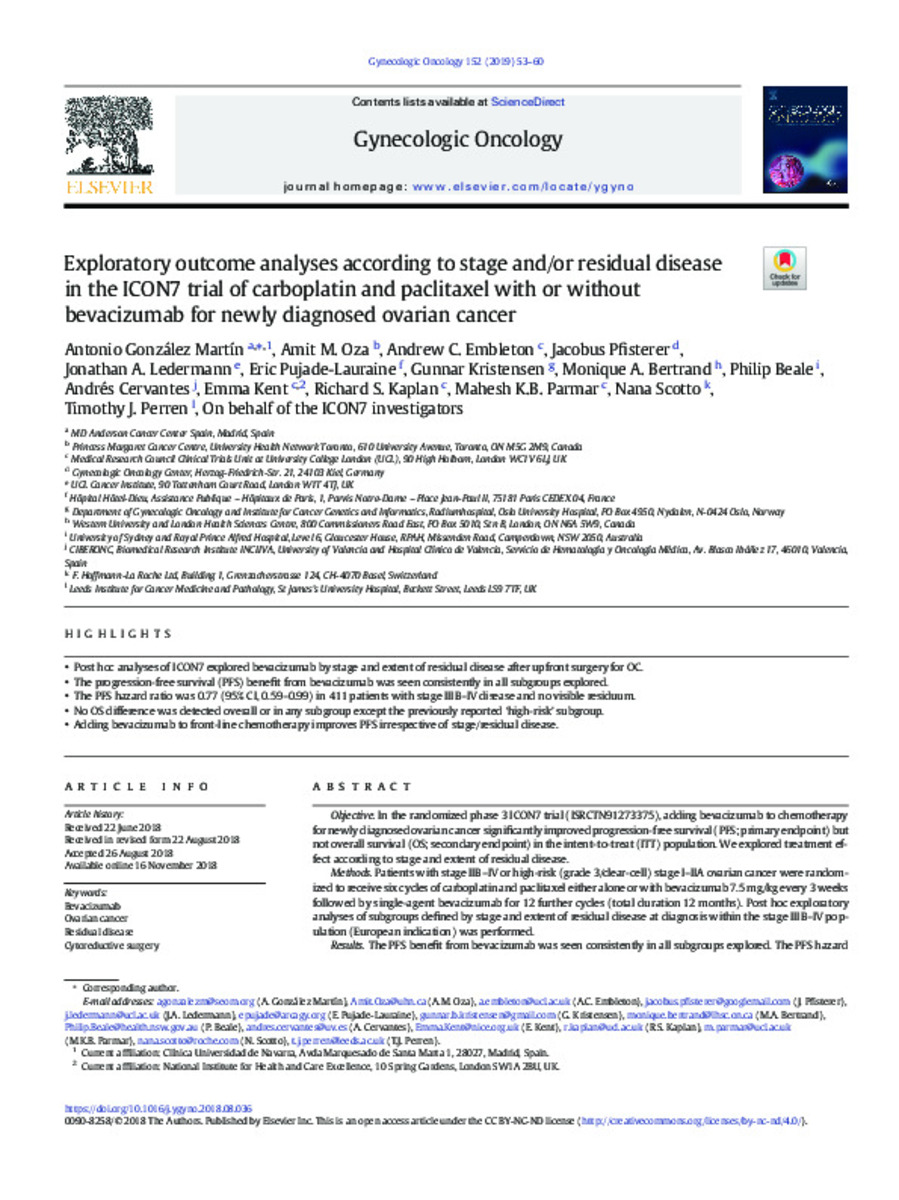Exploratory outcome analyses according to stage and/or residual disease in the ICON7 trial of carboplatin and paclitaxel with or without bevacizumab for newly diagnosed ovarian cancer
Palabras clave :
Materias Investigacion::Ciencias de la Salud::Oncología
Bevacizumab
Ovarian cancer
Residual disease
Cytoreductive surgery
Fecha de publicación :
2019
Nota:
This is an open access article under the CC BY-NC-ND license (http://creativecommons.org/licenses/by-nc-nd/4.0/). Dataset disponible en: info:eu-repo/semantics/dataset/doi/10.1016/j.ygyno.2018.08.036
Cita:
González-Martín, A. (Antonio); Oza, A.M. (Amit M.); Embleton, A.C. (Andrew C.); et al. "Exploratory outcome analyses according to stage and/or residual disease in the ICON7 trial of carboplatin and paclitaxel with or without bevacizumab for newly diagnosed ovarian cancer". Gynecologic Oncology. 152 (1), 2019, 53 - 60
Aparece en las colecciones:
Estadísticas e impacto
0 citas en

0 citas en

Los ítems de Dadun están protegidos por copyright, con todos los derechos reservados, a menos que se indique lo contrario.







